Best Cordless Drill — Buyers Guide, Top Picks, and Comparison
Rechargeable, effortlessly portable, and releasing you from the requirement of electrical outlet access — the best cordless drill units are the consummate user-friendly tools. Whether you’re building cabinets, drilling concrete, working inside engine bays, or demolishing masonry — there’s a battery-powered tool for your project. With a category comprising such diverse machines as drill/drivers, 90-degree units, hammer drills, and rotary tools — it’s no surprise that these are the go-to drills for both ardent DIYers and serious trade professionals.
Cordless Drill Categories
Cordless Drill Information
Best Portable Cordless Drill Categories
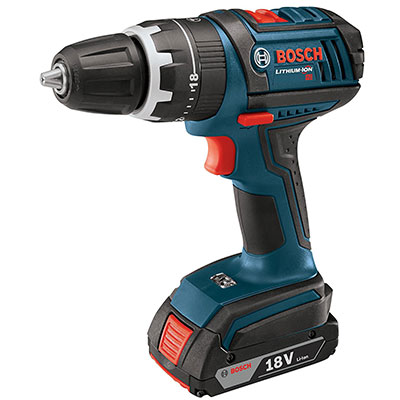
Wireless Drill Driver
Providing powered screwdriving and hole boring, battery operated drill driver units are the consummate DIY and light-contractor machines. Driven by long-lasting lithium-ion cells, these tools are ideal for cabinet making, shelf mounting, and fence building. Furthermore, compatible with a plethora of attachments, they can function as sanders, polishers, mixers, and rust removers.
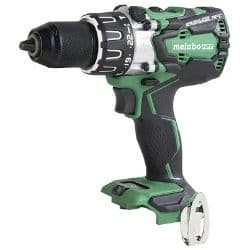
Cordless Hammer Drill
In addition to the typical turning action of the bit, witnessed in standard models, the best hammer rechargeable drills feature a pummeling action. This crushes your target material, permitting effortless boring. Most models allow you to crank up the torque while keeping the speed at a minimum — offering accurate control. Additionally, for more delicate materials such as plastics and wood, you can switch off the hammer mode.
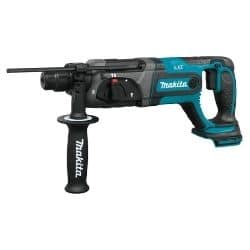
Cordless Rotary Drill
Sufficiently grunty to power through dense masonry and concrete, yet offering mains-free operation — rotary compact cordless drill units are the pinnacle of portable, high-level, on-site demolition tools. Boasting high bpm impact rates, twin or triple drilling action, and a vibration-busting build — these drilling behemoths are as suited to the extreme DIYer as the trade-pro. Arriving as either tool-only or a complete set — there’s an ideal unit for the cordless expert or battery-powered newbie.
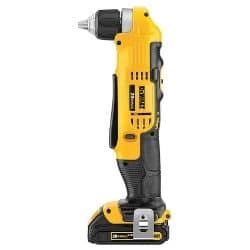
Cordless Right Angle Drill
A cordless right angle drill is the ultimate challenging-space, boring and driving tool. With a 90-degree head, compact design, one-handed operation capabilities, and driven by a lithium-ion cell — it allows you to work in seriously confined areas without requiring mains electric access. Offering lengthy running times, impressive speed, and a large trigger paddle — it’s the effortless solution to working in lofts, beneath floorboards, and between joists.
Our Cordless Drill Top Picks In Each Category
| IMAGE | PRODUCT | DETAILS | ||
|---|---|---|---|---|
|
Best Cordless Drill Driver 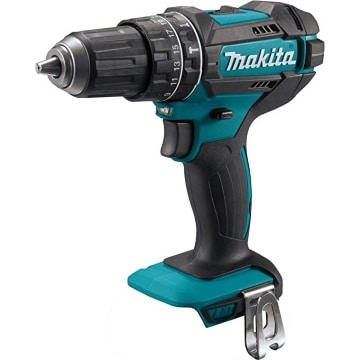
|
Best Cordless Drill Driver
|
Makita XPH10Z
|
Features
|
Check Price at Amazon Makita XPH10Z Review Makita XPH10Z Review |
|
Best Cordless Hammer Battery Drill 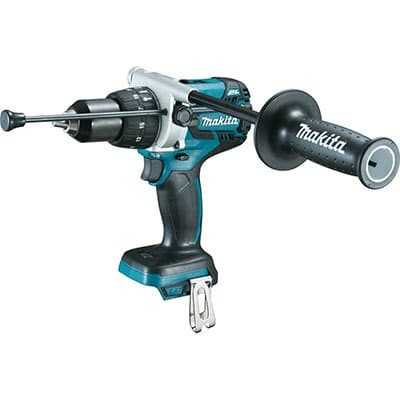
|
Best Cordless Hammer Battery Drill
|
Makita XPH07Z
|
Features
|
Check Price at Amazon Makita XPH07Z Review Makita XPH07Z Review |
|
Best Cordless Rotary Drill 
|
Best Cordless Rotary Drill
|
Makita XRH04Z
|
Features
|
Check Price at Amazon Makita XRH04Z Review Makita XRH04Z Review |
|
Best Cordless Right Angle Drill 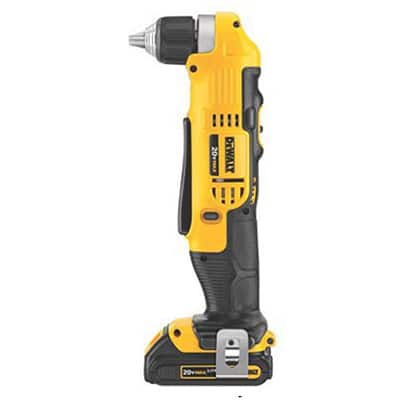
|
Best Cordless Right Angle Drill
|
DeWalt DCD740C1
|
Features
|
Check Price at Amazon DeWalt DCD740C1 Review DeWalt DCD740C1 Review |
Finding the Best Cordless Drill – Buyer’s Guide
The best cordless drill machines free you from the handcuffs of mains-powered boring and driving.
Fueled by one or more lithium-ion cells, these versatile units offer the pinnacle of portability and convenience, without the annoyance or safety hazards concomitant to a power lead.
Possessing impressive grunt, despite being battery-run, the best and most powerful cordless drills can tackle anything from wood and plastics through to masonry and concrete — depending on the machine.
Available in hammer, rotary, drill/driver, and right-angle formats, there’s a tool for every contractor and trade application — whether you’re an avid DIYer or pro-contractor.
Cordless Power Drills History
The world’s first cordless hand drill was invented in 1961 by Black & Decker — in an attempt to solve an out-of-this-world problem.
NASA was about to begin its Apollo moon program. Its intention was not just to land a man on the moon, but to return rock samples to earth for scientific investigation. And naturally, as the spacecraft wasn’t designed to carry boulder-sized stones, it needed an interplanetary drill for the astronauts to use to break down the rocks into smaller pieces.
The issue was, the lack of electrical power points on the moon.
Hence, NASA approached tool-making behemoths Black & Decker to develop the world’s first cordless variable speed drill — able to operate on the lunar surface without a mains outlet.
And, as with many space-driven inventions (Teflon, memory foam, satellite navigation, water filters, etc.), this once top-secret power tool found its way into everyday life.
Today, battery-powered drills are the most popular product in the entire cordless power tool market. Advancements in lithium-ion technology have not only made these machines sufficiently affordable for the average home consumer, but also offer more efficiency, longevity, and power than the original interstellar unit.
Key Features of Cordless Hand Held Drill Machines
Corded Drills vs Cordless Drills — Which Is Best?
One question that frequently arises in online tool user forums is, ‘is a corded drill better than a cordless handheld power drill?’
Unfortunately, there isn’t a definitive answer.
Personal preferences, budget, and project demands can affect whether a battery-powered or mains-driven unit is more beneficial.
The pros of the best cordless power drills over their corded counterparts include:
- More compact and easier to store — check out the Bosch mini cordless drill.
- No extension lead requirements.
- Removes the need for an electrical supply.
- Eliminates the tripping hazards of lengthy mains cables.
- Highly portable.
- More suited to high-level ladder or scaffold projects.
Conversely, the reasons why a mains-powered machine may be preferable over the best lithium-ion drill units are:
- Consistent power — no loss of brawn as the battery fades.
- More lightweight — battery packs add significant heft.
- Longer lifespan — a typical cell will only function for three years.
- Slightly greater speed and torque.
- No downtime due to exhausted batteries.
- Lighter on the pocket.
Cordless Drill Comparisons of Types
If you perform an online search for ‘battery powered drill review’, 99 percent of the results will show a typical drill/driver unit. However, the compact cordless drill niche encompasses much more than this traditional-styled boring tool.
Generally speaking, the battery-powered category comprises four key drill styles — drill/driver, hammer, rotary, and right-angle.
Undoubtedly, the best cordless drill for homeowner DIYers. Affordable and straightforward to operate, these machines are what most people mean when they talk about battery-powered drills.
The moniker hails from the two functions of these units — drilling and driving.
For boring holes, these units either incorporate a 0.375 or 0.5-inch chuck to accommodate metal, plastic, and timber compatible bits. Offering speeds in excess of 1300 rpm, the drill driver is ideal for repetitive and time-intensive drilling projects.
In driving situations, these units allow for user-adjustable torque — permitting you to select the ideal level of grunt to power in screws, nuts, and hooks. Thus making them
the best cordless drill to buy for cabinet making, fence erection, and deck laying jobs.
Furthermore, the drill driver is also compatible with Dremel-style accessories — such as brushes, polishers, small grinders, and abrasive points. Making these machines the best all around cordless drill for the DIYer.
Additionally, these power tools are the lightest-on-the-wallet cordless units on the market. Even a cheap cordless drill driver will be sufficiently powerful and flexible for home-use situations.
Despite all the positives, they do have their limitations — they’re not the best battery drill for hardcore applications.
While excellent for timber, ply, and plastics — drill drivers are useless for masonry, concrete, brickwork, or cement projects. They lack the brawn and pummeling action required for these applications — for these extreme materials, you need a hammer or rotary unit.
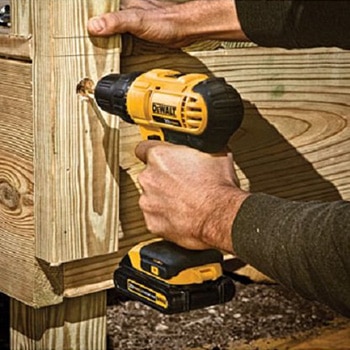
Cordless Drill Drivers Are Good For:
- General home DIY.
- Drilling into wood, thin metals, and plastics.
- Used as an electrical screwdriver/nut driver.
- Finishing tool — with the required attachments.
- Furniture construction.
- Crafting work.
- Affordability — the lowest cordless drill price.
Cordless Drill Drivers Are Not Suitable For:
- Confined space work.
- Addressing masonry.
- Intense, trade-level use.
- Demolition.
A powerful drill unit that’s a muscular step up from its drill/driver sibling.
In addition to the standard rotational function provided by basic boring tools, this machine also offers a pummeling action. Effectively ‘hammering’ away at your target material, it loosens and breaks down dense materials such as brickwork and concrete.
This permits you to relatively effortlessly create holes and threads in masonry — for situations such as attaching HVAC units to exterior walls, securing rainwater goods, and hanging satellite dishes.
Virtually all of these high power cordless drill tools knock out in excess of 1500 rpm through their 0.5-inch chucks. Able to accommodate wide diameter bits, they’re ideal for creating channeling for wiring and plumbing. Furthermore, these broad drill heads will accept mixing tools — making them suitable for stirring paints and plasters.
Despite being one of the best hand drill machines for stubborn materials — you can still use them with a little finesse.
Switching off the hammer function permits you to utilize the unit as a standard borer — required when tackling softer mediums such as plastics and timber. It’s this flexibility that makes these tools the choice of the general trade user and ardent DIYer. That said, they have too much power to be utilized as a power driver — unless you want to shear every screwhead you address.
Additionally, while mighty, hammer units aren’t the strongest cordless drill machines on the market — a title that goes to the rotary hammer drill.
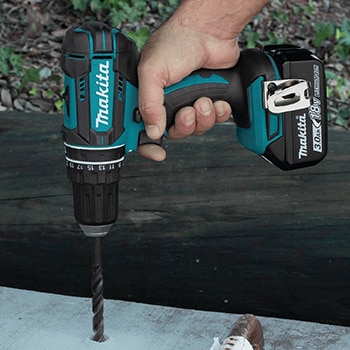
Cordless Hammer Drills Are Good For:
- Drilling into concrete and masonry.
- Mixing plaster and paints.
- Used as an all-around home drill.
- Addressing dense hardwoods (with hammer turned off).
- Creating channels for pipes and electrical wiring.
Cordless Hammer Drills Are Not Suitable For:
- Demolition work.
- Screw driving.
- Light woodwork.
- Close-quarter work.
While offering a similar pummelling action to its standard hammer counterpart — making it suitable for masonry applications — it’s the system by which this pounding is applied that makes it the Goliath of grunt.
Traditional hammer units utilize a clutch mechanism to punch the target material, whereas a rotary model achieves its pummeling motion through twin pistons. Internally, it functions as a pneumatic machine, with a column of air both propelling the SDS+ drive bit and providing cushioning, crucial for protecting components.
It’s this specific design that allows the cordless rotary unit to deliver unparalleled impact power — typically in excess of 4000 bpm (blows per minute). That said, they’re not the fastest cordless drill machines — with rapidity being sacrificed for pure brawn.
Hence, not only are rotary tools excellent at drilling into brickwork and concrete, these behemoths can also be utilized for light demolition and chipping projects — unachievable with a traditional cordless hammer unit.
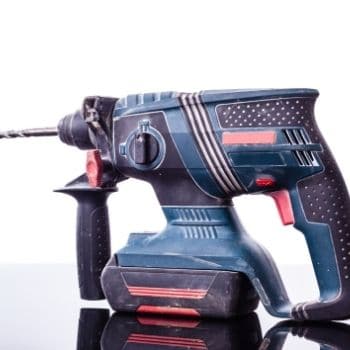
Cordless Rotary Hammer Drills Are Good For:
- Creating anchor points in building footings.
- Chipping render from brickwork.
- Drilling into masonry.
- Hardcore professional cordless drills applications.
- Mounting stanchions.
- Demolition.
Cordless Rotary Hammer Drills Are Unsuitable For:
- Driving screws.
- Drilling into timber or plastic.
- Craft projects.
- Confined space applications.
Project-specific, right-angle machines are the best lightweight cordless drill units for confined space work.
Drill drivers, hammers, and rotaries all share one major downside — their size. Even the most compact of these small cordless drill machines can be challenging to use in confined areas — such as beneath floorboards or inside engine bays.
Featuring a minimalist snub head, slimline construction, and a 90-degree chuck — the top cordless drill machines with a right-angle feature are excellent at accessing the most restrictive of spaces.
Typically lightweight, these tools boast one-handed operation, a feature exemplified by large throttle paddles permitting multi-digit operation. Speeds up to 2000 rpm allow for rapid drilling through their 0.375 or 0.5-inch chucks, and integrated LED lamps permit use in poorly lit conditions.
Admittedly, these machines are low on the power index. Completely unsuitable for masonry and concrete, they’re pure timber, plastic, and light sheet metal borers. That said, lacking in brawn, they’re ideal closed-quarter screwdrivers — permitting you to accurately secure screws and nuts, without fear of head shearing.
It’s for this reason that many cordless drills reviews describe these 90-degree tools as the best home cordless drill for the casual user. Small enough to be stored in a kitchen drawer, they’re appropriate for light-duty screw fixing and hole drilling.
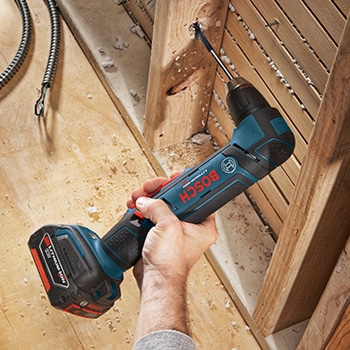
Cordless Right Angle Drills Are Good For:
- Automotive work.
- Plumbing projects underneath shower trays, basins, and tubs.
- Working betwixt ceiling slats.
- Cabinet building.
- Working between floor joists.
Cordless Right Angle Drills Are Unsuitable For:
- Demolition.
- Masonry work.
- High torque applications.
- Projects that require two-handed operation.
Considerations When Purchasing the Best Battery Powered Drill
As already mentioned in this battery drill review, the cordless drill category covers a wide range of tool formats — each type with its own particular characteristics.
Therefore, when selecting your perfect tool, I recommend checking out my rechargeable drill reviews and guides by specific type — drill/driver, hammer, rotary, or right-angle — for detailed info on each.
That said, as a general overview, here are the key features I feel are worthy of consideration when choosing any cordless drill set or individual tool:
The Best Cordless Drill Type For Your Project
As explained above in this battery power drills reviews article, there are four main formats of rechargeable boring tool.
Your first and most crucial deliberation is what type best suits the demands of your projects. In brief:
- Drill/driver for general household DIY.
- Hammer drill for dense materials.
- Rotary hammer drill for extreme masonry and demolition.
- Right-angled for confined space applications.
Battery Capacity
But, in truth, the voltage isn’t that important.
Theoretically, the greater the voltage, the more powerful and rapid the tool. Hence, a 20V cordless drill should provide a more impressive output than a 12V cordless drill. However, in practice, tools are geared up or geared down depending on their function.
Hence a 12-volt hammer drill would knock out more grunt than an 18-volt drill driver — the former designed for force, the second for speed.
Therefore, when choosing your drill, a more useful comparison is the mAh (milliampere per hour) rating. This indicates how long the battery will run for from a single charge — the higher the rating, the more extensive the operational time.
At the very least, look for a 12, 20, or 18V cordless drill with a cell rated as 4.0 mAh minimum.
Tool-Only or Complete Set
You may believe that you’ve found yourself the best cordless drill for the money — a high-quality tool from a premium brand that’s remarkably affordable. However, when your new unit arrives on your doorstep, you discover it’s tool-only — that is, with no charger or lithium-ion cells.
Many brands assume that you already own the power unit and recharger. If you don’t, making an additional purchase of these two key components can add significant cost to your tool.
Hence, always check what the cordless drill deal includes — before making a commitment.
Motor Type
Battery-driven drills will either feature a brushed or brushless motor.
The brushed format, unsurprisingly, utilizes an internal powerhouse with brushes that create contact with the motor. A brushless drill, however, features a system of permanent and electromagnets to turn the rotor.
Where possible, I suggest always opting for a brushless cordless drill.
As there’s no physical contact between the components, energy losses to heat and friction are minimized. This means that valuable cell power isn’t wasted, elongating the running time of your tool.
Weight
However, when you’re reading the manufacturer’s specifications or a compact cordless drill review — be careful. Often, the weight metrics are provided as tool-only — excluding the mass of the cordless drill battery.
As these power packs add considerable heft to the overall weight of the machine, it’s crucial you obtain a figure including the cell.
Additional Accessories
Check the cordless drill sale details for any included accessories. On top of the battery and charger as already discussed, look for:
- Hard storage/carry case.
- Interchangeable chucks (where appropriate).
- Drill bits.
- Chuck key.
- Lubricant.
- Screwdriver heads (for drill drivers).
- Tool wrench.
- Extensive warranty.
Conclusion
The best battery drill machines release you from the shackles of mains-power tethering.
Exceptionally portable, relatively lightweight, and powered by long-lasting lithium-ion cells — these units are the answer to ditching the hazards of electrical cords.
With an expansive cordless category covering everything from drivers and hammers through to rotaries and right angles — there’s a suitable tool for every boring, chipping, or screwdriving project.
Whichever format you choose, ensure that you check out the mAh of the cell, whether the machine includes a battery and charger, and whether the tool features a brushed or brushless motor.
Sure, the restrictive running time may prove a downer for some guys — especially if you don’t have a ready supply of backup power packs. If this sounds like you, check out the best corded drivers, hammers, rotaries, and 90-degree units instead.
However, if you’re seeking the ultimate in operational freedom — I suggest you get your hands on a cordless drill.
Best Cordless Battery-Powered Drill FAQs
Q: What Is the Best Cordless Brushless Drill Rotary?
In my opinion, the best rotary cordless drill with most torque is the Makita XRH04Z — knocking out in excess of 4000 bpm.
Q: What’s the Best Cordless Drill for Confined Spaces?
For me, the highest rated cordless drill for close-quarter work is the DeWalt DCD740C1, boasting 2000 rpm, twin speeds, and a keyless chuck.
Q: What Is the Best Cordless Drill on the Market for Screw Driving?
Delivering a mighty 480 in-lbs of torque, 1900 rpm, and featuring a 0.5-inch chuck — I suggest that the Makita XPH10Z is the best 18V cordless drill driver.
Q: Who Makes the Best Cordless Drill?
Whether you’re looking for the best 20v cordless drill, or the ultimate 20V drill, I recommend checking out the leading brands of DeWalt, Bosch, and Makita.
Q: What Are the Best Cordless Drills for Light Masonry Work?
For light concrete and masonry applications, you need a cordless hammer drill. I suggest the best battery powered drill to deal with these dense materials is the DeWalt DW511.
Q: How to Choose the Best Battery Powered Drill?
Whether you’re reading 18v cordless drills reviews or 20v cordless drill reviews, check for:
Battery mAh.
Weight.
Brushed or brushless motor.
Complete set or tool-only.
Format — drill/driver, hammer, rotary, or right-angle.
Q: What Is the Most Powerful Cordless Drill?
Undoubtedly, the gruntiest of all battery-powered categories are the cordless rotary drills. Built to effortlessly plow through masonry, my personal favorite is the grunty Makita XRH04Z.
Q: What Is the Best Cordless Drill To Buy?
It depends on your drilling projects, for:
General household DIY — cordless drill driver.
Dense materials — battery-powered hammer drill.
Masonry and demolition — cordless rotary drill.
Confined spaces — rechargeable right-angle drill.
Q: What Is the Most Expensive Cordless Drill?
Designed for trade professionals, and offering the ultimate in torque and grunt, cordless rotary drills are the most pricey rechargeable units.
Q: Best Budget Cordless Drill?
The Bosch PS31-2A is not only the best compact drill for those on a budget but also the ultimate mini small power drill. It boasts 265 in-lbs of torque, dual speeds, and delivers 1300 rpm.
Q: What Does Brushless Cordless Drill Review Mean?
This refers to the working mechanism of the internal powerhouse. A brushless motor uses a combination of permanent and electromagnets to turn the motor’s rotor — cutting back on friction seen on brushed formats.
